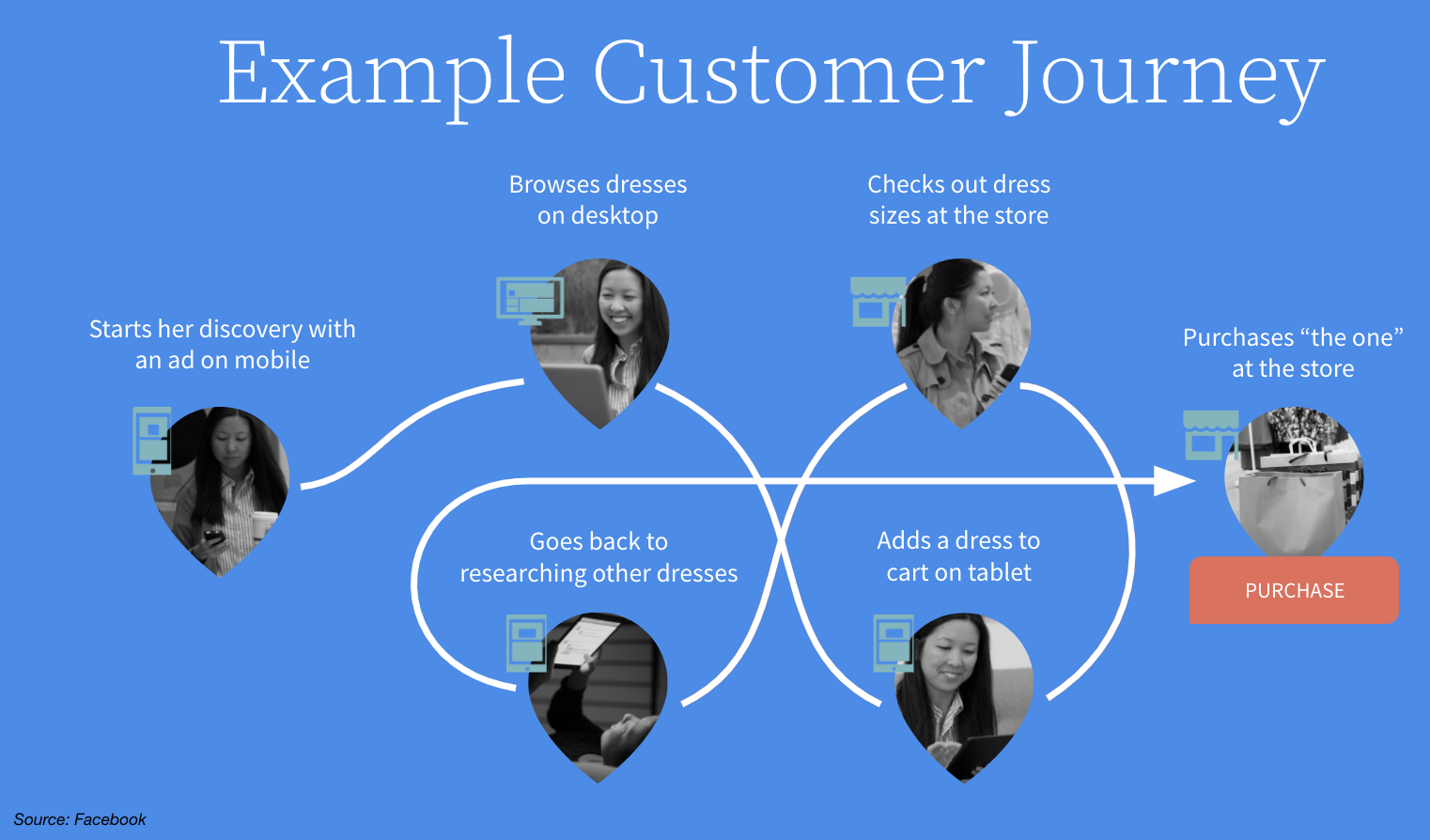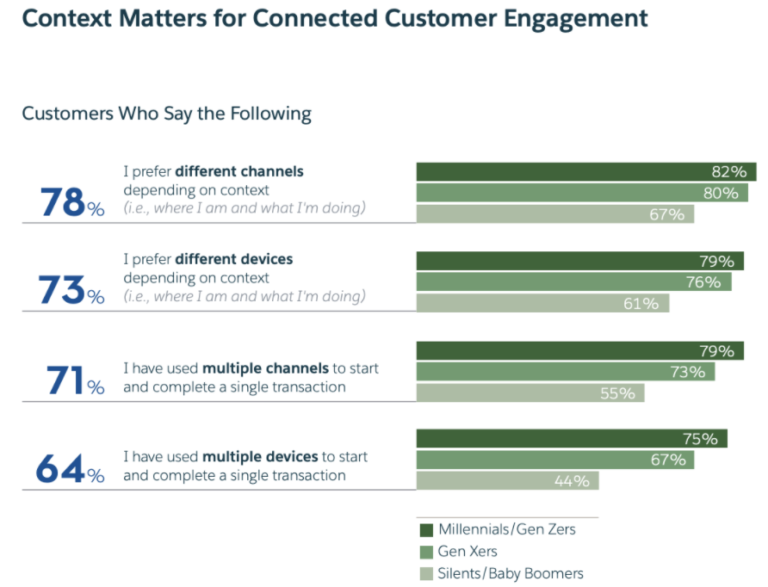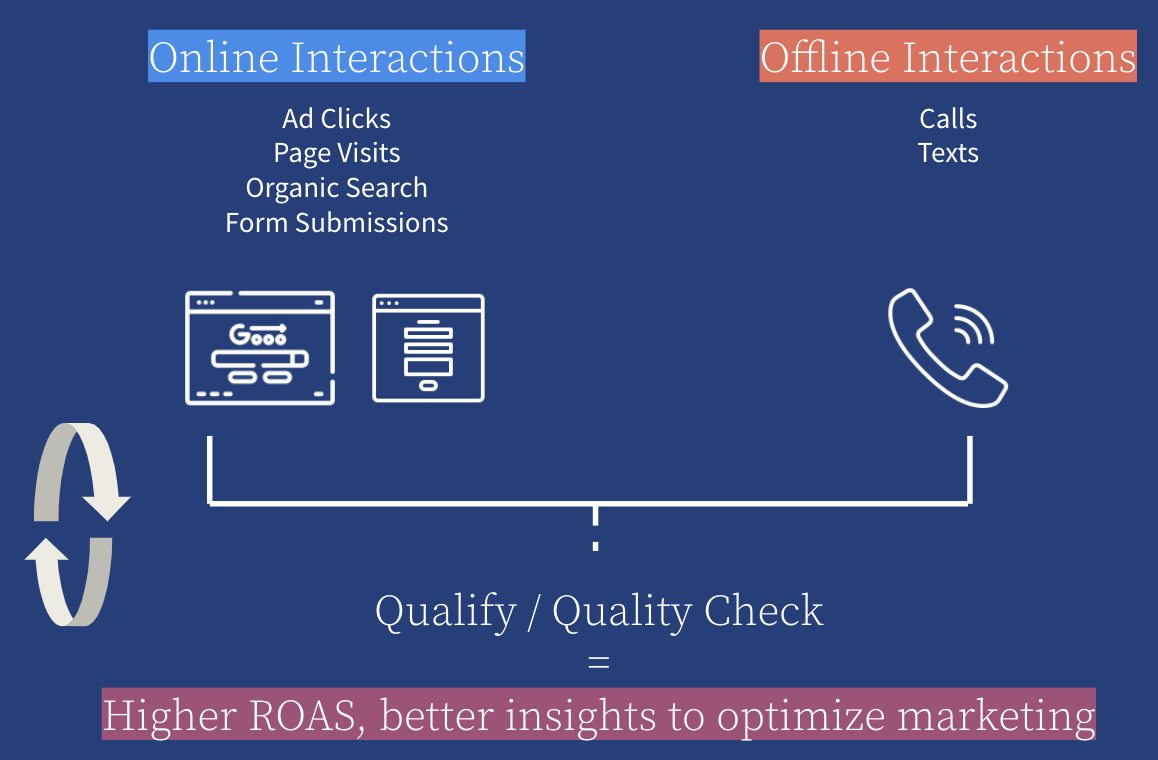15 Feb How to Improve Your Lead Quality & Follow-up via @lorenbaker
Struggling to keep up with leads from various sources and channels?
On February 10, I moderated a Search Engine Journal webinar presented by Jessica Clarke and Anna Charity of CallRail, together with Nalini Prasad of BluShark Digital.
They shared their best tips for ensuring a strong lead follow-up, regardless of the channel.
They also dived into techniques to improve lead tracking and drive more leads in the most efficient and cost-effective ways possible.
Here’s a recap of the presentation.


Consumer Habits & Expectations
The way brands advertise is complex.
We’re advertising on various channels, using different keywords, and optimizing our messaging.
Likewise, the way buyers purchase is fragmented.
A potential ecommerce customer might start her discovery with an ad on mobile and browse dresses on desktop.
She might add a dress to her cart on a tablet or even check out dress sizes at the store.
She might even go back to researching other dresses online before finally purchasing “the one” at the store.


The same thing is happening for customers in B2B and other industries.
Customers are exploring different products or services, across various days on a wide range of platforms.
Oftentimes, these channels often work against each other to get “credit” for a sale.
This is why trusting the network you’re buying the ads from for attribution is a bad idea.
With that said, you can’t just stick to a single channel to reach your customers.
They want to communicate on their own terms—and have the option to communicate across multiple channels.
In fact, they may not do business with you if they can’t communicate in their preferred environment. In fact, a Salesforce report found that 40% of customers won’t do business with a company if they can’t use their preferred channels.
It’s also important to consider that a customer’s chosen communication channel varies based on where they are and what they are doing.
Customers will hop from channel to channel throughout the journey; the same Salesforce report revealed that 71% of consumers have used multiple channels to start and complete a single transaction.


The Challenge: Delivering a Seamless Experience
Even when customers bounce from channel to channel, they expect consistency in service and message.
They don’t want to have to repeat themselves; they want to pick up where they left off.
One channel is an extension of the experience on the next.
Today, customers want omnichannel communication as opposed to multichannel communication.
Multichannel vs. Omnichannel: What’s the Difference?
While multichannel and omnichannel strategies both involve marketing across multiple digital and physical channels, the difference lies in how seamless the customer’s experience is throughout those channels.
Multichannel communication tends to be brand-focused.
While all channels are present, they are not integrated which results in fragmented communication.
On the other hand, omnichannel communication is customer-focused with all channels present and integrated, delivering a unified experience for the consumer.
The Opportunity
The fact that customer expectations are not being met creates an opportunity for you and your business to fill that gap, offer a better customer experience, and grow your business.
Here are tips to help you improve the customer experience.
Be Perceptive & Know Your Audience
Utilize data to identify what type of consumer is engaging with your brand.
- Where, geographically, are the majority of your consumers calling from?
- What source is driving the majority of your consumers to your landing page?
- Are your consumers filling out forms, or making direct calls?
If you’re using a call tracking solution, listen to call recordings or read call transcripts to hear what your customers or clients are discussing with your business.
Make sure your keyword strategy and the content you produce align with those themes.
Call data offers plenty of information to inform PPC campaigns based on excellent keyword research.
Be Informed
Go beyond the basics and enhance your data with CallRail/Google analytics integration.
With this, you can acquire more detailed info on your prospects:
- Age, gender, and other demographics.
- Choice of browser (Safari, Chrome, etc.).
- More accurately pinpoint a customer’s location.
- Affinity/interests.
- Recurring or first-time visitor before call/contact form submission.
Be Specific
Knowing your audience enables you to:
- Use language and images that resonate with your consumers’ demographics.
- Use relevant keywords and clear CTAs.
- Provide easy access to contact forms, phone numbers, live chats, etc.
Be Accessible
Accessibility and communication can result in greater customer engagement and satisfaction.
Make sure your customers can contact you when and where they want to, whether that means by phone, chat, text, social, or email.
Your phone number should be listed everywhere including your website, Google My Business profile, social media, PPC landing pages, etc.
Be Helpful
Route Your Customers to the Appropriate Department or Person
Make sure your customers are speaking to the person most qualified to help them.
Routing calls makes it easy for customers to get to the person or team they need.
Also, consider doing call transfers. If there is someone better suited to assist, quickly transfer and fill the new person in on background and details.
Prep Your Team to Provide Customer Satisfaction
Set your team up for success with regular training and coaching.
Listening to call recordings and reading transcriptions will help you learn more about your customers.
Your team should be prepared to answer customers’ most common questions.
Ensure that you’re monitoring calls during training and providing support where needed.
Arm Them with Visibility
Using a call tracking solution that offers whisper messages is helpful.
A whisper message is a short message that plays to the person answering the phone before they’re connected to the caller. This tells your team why the customer is calling.
Having an interaction history that shows who the caller last spoke to is also useful.
Focus on Relationships & Making the Journey Easy on the Consumer
Understand your customers’ history with your company.
Give them the continuity they want and don’t ask them to restate their need multiple times.
We all hate it when we dial a business and they ask you for your date of birth, or order number, and then the first thing they ask for is your date of birth and order number when they pick up the phone.
Ways to Uncover & Generate More Qualified Leads
Pinpoint the Marketing Driving Your Best Leads
You’ll want to dig into the search keywords, campaigns, sources, and channels that are not only driving leads, but driving qualified leads.
But how does a marketer prove which marketing activities are driving qualified leads?


Historically, it’s been difficult for marketers to marry online and offline lead interactions and have streamlined reporting.
Now, with CallRail, you have a way to take all your leads or interactions coming through from any channel and qualify those leads based on the criteria you’ve set.
Look for Low Conversion Factors
Armed with better data and insights, you can identify the low-hanging areas for improvement.
For instance:
- Are there leads from prospects outside your geographic target?
- If a specific age or gender is not converting well, is it a product or intake issue, or should you be targeting that age and gender less frequently?
Analyze Your Data When A/B Testing
Pay attention to the following statistics:
- Call length can help measure whether a new tactic or strategy was successful.
- Call transcript and keyword spotting can help measure the effectiveness of new types of ads.
- Higher conversion rates (seen on Google Analytics) of specific demographics after changing targeting content and keywords can indicate a successful new strategy.
Listen, Reflect & Enhance
Data helps us provide answers about low-quality leads.
Listen to recorded calls and look for key themes or issues in your intake.
- Are people getting disconnected before reaching intake?
- Are there common questions asked by your consumer on a first call? If so, provide a better user experience with pointed FAQs on your site.
- Are there common reasons consumers decline to purchase your services or product? How can your business address these missing pieces that consumers are looking for?
Strategies to Increase Your Close Rates
You are investing time and money in marketing to generate a higher volume of quality leads, but that is only half the battle.
You need to be equipped to close the sale in order to boost your bottom line.
Be Available & Responsive
Having all of the communication channels in the world won’t help if you aren’t available to respond to them.
And having separate, disparate tools for those communication channels makes it difficult to prioritize and handle each one.
Make sure you have the ability to view them all in one centralized hub so you can easily identify those that haven’t been handled yet.
Reduce the time it takes to connect and route interactions only to those who are available.
Using text when you are on another call or using automated text responses can keep a prospect engaged so they don’t reach out to a competitor.
Not only do customers want consistent omnichannel communication and service, but they also want help quickly and they want it 24/7.
Speed to Response + Follow-up Is Critical
A study by Lead Connect found that 78% of customers buy from the company that responds to their inquiry first.
Faster lead response times are critical and can lead to:
- Better first impressions of your brand.
- An inside lane to “win the race” for prospects.
- Higher conversion rates.
To improve your lead response time:
- Organize leads according to recency.
- Centralize all incoming leads.
- Assign incoming leads based on availability.
- Consider automated responses to start the process of engagement.
- Let users know how long it typically takes you to respond.
Don’t Let Leads Slip Through the Cracks
The systems that employees have to help them meet customer demand and expectations are failing them.
They are spending 10% of their time gathering the information they need to assess each person’s unique journey and personalize conversations.
Leverage solutions to learn more about customers rather than spending valuable time asking questions.
Tools like CallRail and Lead Center can help give you more details about your caller.
Shorten the Sales Cycle
Focus on Channels That Bring the Highest Quality Leads
Focusing your marketing efforts and spend on the channels that bring you the highest quality leads will ensure your sales team is focused on closing only those that are most qualified.
This will likely increase their close rate and shorten the time it would take to get a less qualified lead to close.
Automate Lead Qualification & Classification
Classifying or categorizing interactions manually is incredibly time-consuming, labor-intensive, and prone to human error.
AI tools like CallRail’s Conversation Intelligence can assist sales reps in covering more ground in less time.
They can focus their energy, resources, and time on the most profitable customers.
Leverage a Mix of Communication Tools to Connect Faster
Leverage texting to eliminate lengthy back and forth via phone or email.
Some consumers prefer the informal quick response that texting enables.
Depending on your business, send photos and videos to help identify the customer need and draft a quote without having to schedule a visit.
[Slides] Top Tips to Improve Your PPC Lead Quality & Follow-up
Check out the SlideShare below.
Image Credits
All screenshots taken by author, February 2021
Sorry, the comment form is closed at this time.